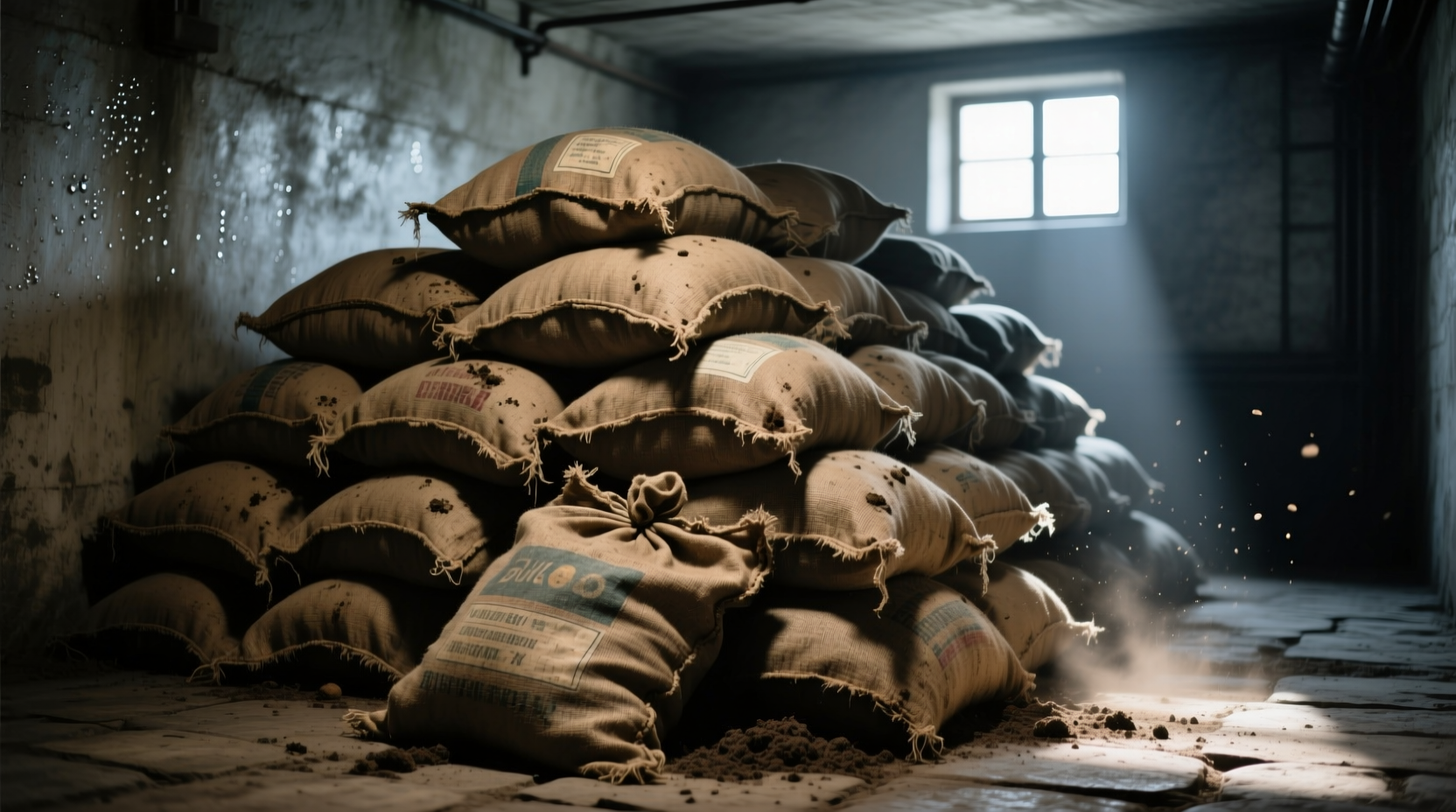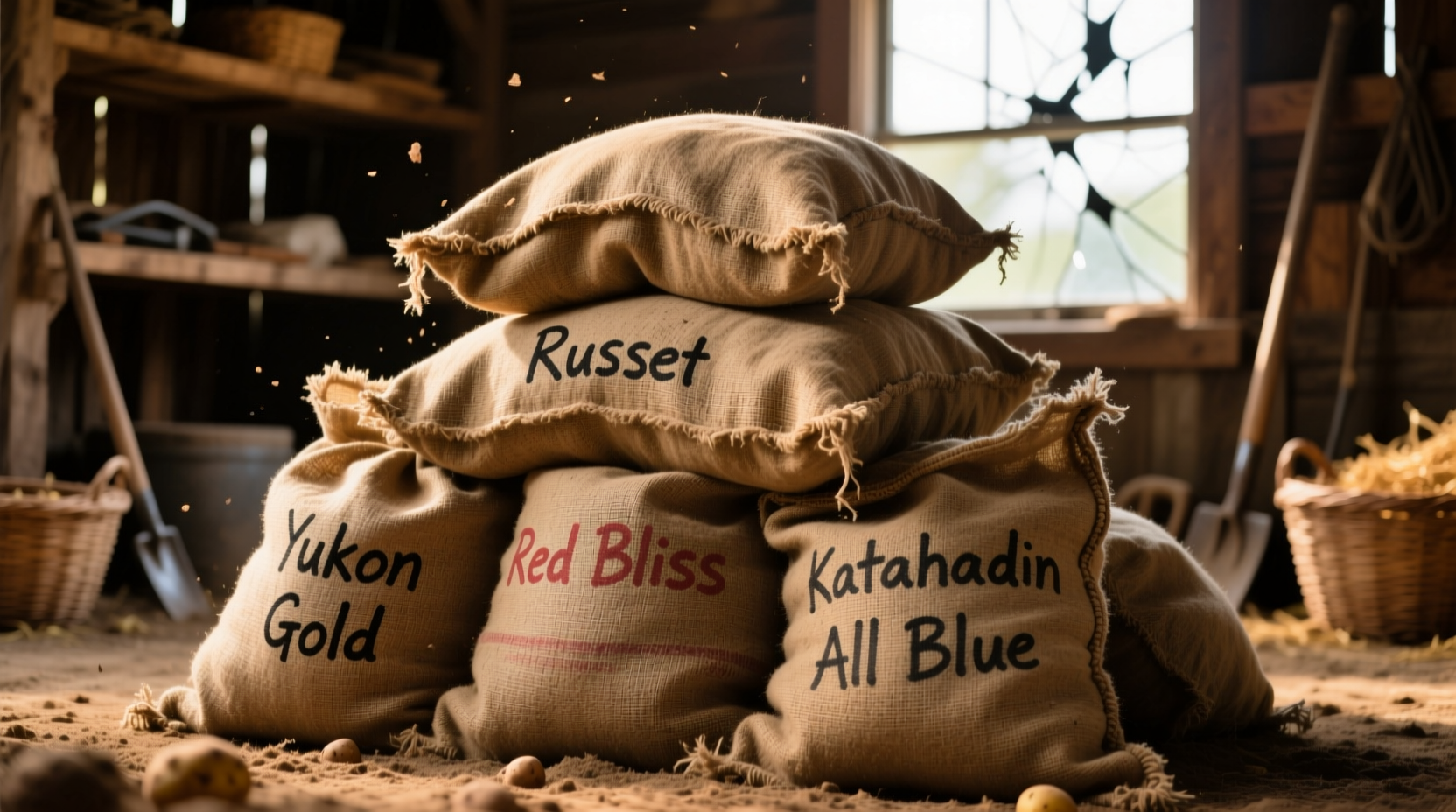Discover why professional growers and food preservation experts consistently choose burlap for potato storage. This guide reveals the science-backed storage protocol that keeps potatoes fresh for months, not weeks. You'll learn exactly how to select the right sack, prepare your potatoes properly, and maintain ideal storage conditions to maximize shelf life while preserving nutritional value.
Why Burlap Outperforms Other Storage Materials
Potatoes require specific environmental conditions to maintain quality during storage. The natural jute fibers in burlap sacks create the perfect microclimate through three critical mechanisms:
- Breathability: Allows continuous air exchange, preventing ethylene gas buildup that accelerates sprouting
- Moisture regulation: Absorbs excess humidity while preventing excessive drying
- Light blocking: Protects against chlorophyll development and solanine production
Unlike plastic containers that trap moisture and promote rot, or paper bags that degrade when damp, burlap maintains structural integrity while managing moisture levels. Research from the University of Maine Cooperative Extension confirms that proper ventilation reduces spoilage rates by up to 45% compared to sealed storage methods.
| Storage Method | Shelf Life | Common Issues | Moisture Management |
|---|---|---|---|
| Burlap sacks | 4-6 months | Minimal sprouting | Excellent |
| Plastic bags | 2-3 weeks | Rapid rot, mold | Poor |
| Cardboard boxes | 1-2 months | Dampness, early sprouting | Fair |
| Wire baskets | 3-4 months | Excessive drying | Good |
Selecting the Perfect Burlap Sack for Potato Storage
Not all burlap sacks deliver equal performance. For optimal potato preservation, look for these specific characteristics:
- Weave density: Choose sacks with 8-10 threads per inch for ideal airflow without excessive drying
- Size appropriateness: 25-50 pound capacity sacks work best for home storage (avoid oversized commercial sacks)
- Natural treatment: Untreated burlap without chemical preservatives maintains proper pH balance
- Reinforced seams: Double-stitched edges prevent tearing when moving partially filled sacks
Agricultural studies from Cornell University's Department of Horticulture show that improperly sized sacks can reduce storage effectiveness by up to 30%. Oversized sacks create air pockets where moisture accumulates, while undersized sacks restrict airflow through compression.

Step-by-Step Potato Storage Protocol
Following this professional storage method ensures maximum shelf life and quality preservation:
- Cure potatoes first: Allow freshly harvested potatoes to cure for 10-14 days at 50-60°F with 85-90% humidity
- Prepare the sack: Air out new burlap sacks for 24 hours to remove any manufacturing odors
- Fill properly: Fill sacks only ¾ full to allow adequate air circulation throughout the contents
- Store in ideal conditions: Maintain 45-50°F temperature with 90-95% relative humidity
- Monitor regularly: Check potatoes weekly for any signs of spoilage, removing affected tubers immediately
The USDA Agricultural Research Service confirms that maintaining temperatures below 50°F significantly reduces sprouting while preserving nutritional content. Temperatures below 40°F convert starches to sugars, affecting flavor and cooking properties.
Avoiding Common Storage Mistakes
Even with proper burlap sacks, these frequent errors compromise potato quality:
- Storing near onions: Onions release gases that accelerate potato sprouting - keep them in separate rooms
- Exposure to light: Even brief light exposure triggers solanine production (the toxic compound that makes potatoes green)
- Washing before storage: Moisture trapped in burlap increases rot risk - only brush off excess dirt
- Storing damaged potatoes: One spoiled potato can contaminate an entire sack within days
According to the National Potato Council's storage guidelines, proper separation from ethylene-producing fruits like apples extends potato shelf life by 25%. The organization's research shows that even small amounts of light exposure can double sprouting rates within three weeks.
Seasonal Storage Adjustments
Successful long-term storage requires seasonal adjustments to your burlap sack protocol:
- Fall harvest: Prioritize curing before placing in burlap sacks; initial storage should focus on moisture reduction
- Winter months: Monitor for excessive drying; occasionally mist sack exterior if humidity drops below 85%
- Spring transition: Gradually increase temperature when moving potatoes to kitchen storage
- Summer storage: Requires additional cooling measures; consider basement storage with temperature monitoring
Food science research from Washington State University Extension demonstrates that gradual temperature transitions prevent condensation inside burlap sacks, which is a leading cause of late-season spoilage. Their studies show that sudden temperature changes of more than 10°F can create enough internal moisture to trigger rot within 48 hours.
Frequently Asked Questions
How long do potatoes last in burlap sacks compared to other storage methods?
Properly stored potatoes in burlap sacks typically remain fresh for 4-6 months, compared to 2-3 weeks in plastic bags and 1-2 months in cardboard boxes. The natural breathability of burlap prevents moisture buildup while allowing necessary air circulation.
Can I wash potatoes before storing them in burlap sacks?
No, washing potatoes before storage increases spoilage risk. Excess moisture trapped in burlap creates ideal conditions for rot. Instead, gently brush off dirt and allow potatoes to cure for 10-14 days before placing in dry burlap sacks.
Should I store potatoes and onions together in burlap sacks?
Never store potatoes and onions together. Onions release gases that accelerate potato sprouting. Keep them in separate rooms with different humidity requirements - potatoes need higher humidity (90-95%) than onions (65-70%).
How can I prevent potatoes from sprouting in burlap sacks?
Maintain storage temperatures between 45-50°F, ensure complete darkness, and check potatoes weekly for early sprouting. The University of Maine recommends placing an apple in the storage area as it releases ethylene that actually suppresses sprouting in potatoes.











 浙公网安备
33010002000092号
浙公网安备
33010002000092号 浙B2-20120091-4
浙B2-20120091-4